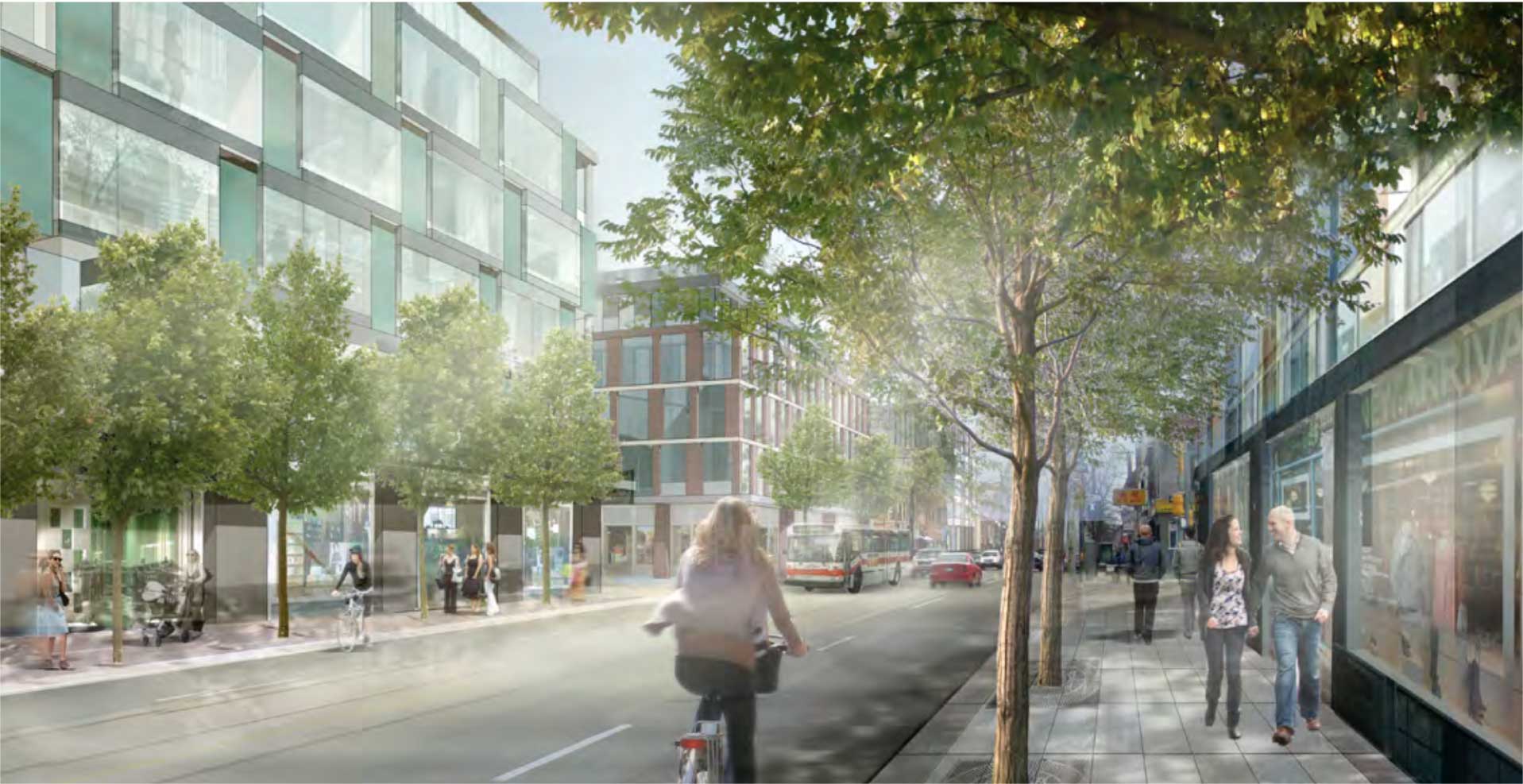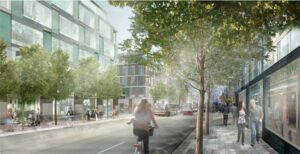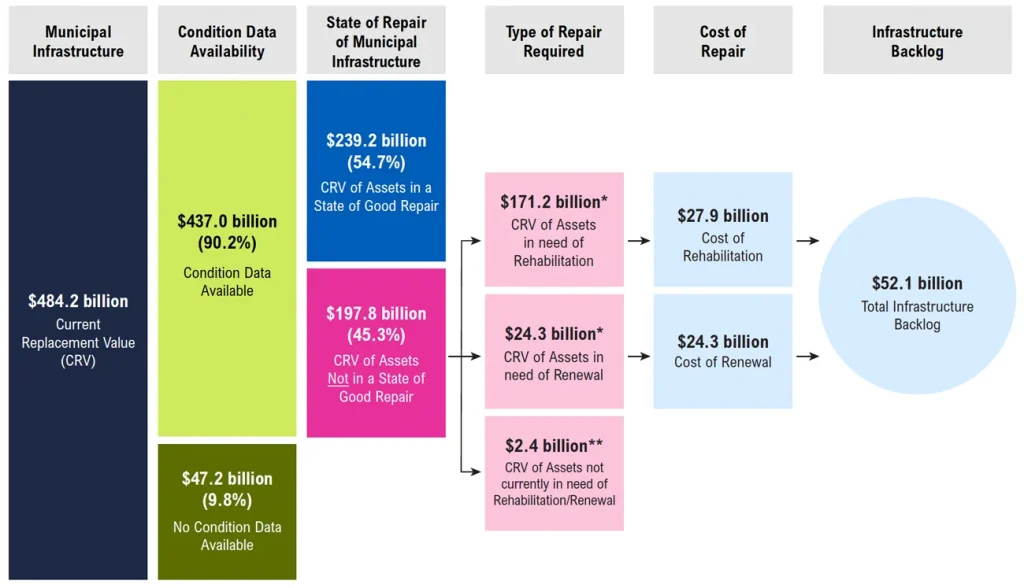15-Minute Communities
The 15-minute community (sometimes also called 15-minute ‘city’ or ‘neighbourhood’) is a vision for development that is human centred and community oriented.
15-minute communities occur where the basic things we need, like groceries, workplaces, doctor’s offices, community services and childcare, are all available within a 15 minute walk or roll from home.
Hold up!
If you’re here because you think 15-minute cities are open air prisons, this article isn’t going to make you happy.
The concept of 15-minute cities is, in fact, exactly the opposite of that – it provides more opportunity for movement, with the 15-minute marker meant simply as an indication of proximity to local stores and other amenities.
One of the biggest changes we’ve experienced as a society in the past two decades is a vast increase in the ease of publishing to potentially huge audiences. This has both enabled access to a lot of very good information, and enabled access to a lot of very bad information.
In tandem to this has been a steep rise in misinformation and conspiracy theories, both, generally, connected to folks who either don’t know much about a topic, or folks who deliberately mislead.
The 15-minute city concept has been caught up in that dynamic.
Again, if you’re here due to the notion that 15-minute cities are open-air prisons, you are already pretty deep down a rabbit hole, and this likely won’t change your thinking on the matter.
If you are curious and open to learning about this great idea, however, read on!
Debunking the Conspiracies
- CBC: Debunking the 15-minute-city conspiracy theory — and why it erupted at Essex County council
- CNU: Debunking the 15-minute city conspiracy
- Wired: The 15-Minute City Conspiracy Theory Goes Mainstream
- The Conversation: 15-minute cities: how to separate the reality from the conspiracy theory
- AP: FACT FOCUS: Conspiracies misconstrue ‘15-minute city’ idea
10 Questions You Can Ask to Defend Against Misinformation
- Does the claim rely on verifiable evidence, or is it based on anecdotes, speculation, or unverified reports? (A conspiracy theory often lacks concrete, credible evidence and instead relies on circumstantial evidence or leaps in logic.)
- Does the claim disproportionately accuse specific groups or individuals without plausible motivation or evidence of benefit? (Conspiracy theories often assign blame to groups or individuals based on stereotypes or preconceptions, not actual behaviour or gain.)
- Can the claim be proven wrong if contradictory evidence arises? (Genuine theories are falsifiable; conspiracy theories often shift goalposts or dismiss evidence as part of the conspiracy.)
- Does the claim require the coordinated actions of a large number of people or entities over a long period, without credible leaks or errors? (Large-scale coordination is rare and typically unsustainable in real life, making overly complex theories less plausible.)
- Are the sources reliable, credible, and consistent with known facts, or are they obscure, biased, or unverifiable? (Conspiracy theories often rely on disreputable or fringe sources.)
- Does the claim dismiss conflicting evidence as part of the conspiracy, or does it engage with it rationally? (Conspiracy theories frequently reject contradictory evidence outright, labelling it as a deliberate attempt to mislead.)
- Does the claim rely on historical inaccuracies, or does it align with established historical patterns and evidence? (Conspiracy theories often distort or ignore historical context to fit their narrative.)
- Does the claim rely on generating fear, outrage, or other strong emotions to persuade rather than presenting logical arguments? (Conspiracy theories often manipulate emotions to sidestep critical thinking.)
- Do reputable experts and authorities in the relevant field widely support or debunk the claim? (Conspiracy theories are frequently dismissed by experts due to lack of evidence or methodological flaws.)
- Is the claim unnecessarily convoluted when a simpler, evidence-based explanation suffices? (Conspiracy theories often overlook Occam’s Razor, preferring complex or sensational narratives over straightforward ones.)
SCGC, along with other organizations, has been advocating for a move towards establishing 15-minute communities in Simcoe County before development occurs outside of the built-up area.
What this would mean, in practice, is that existing communities would continue to be developed until residents are able to access basic amenities within a 15 minute walk. Only after that condition has been met would development to expand the community outward occur.
Read on below for reason why this makes sense, financially, for our health and safety, and for the environment.
What are 15-Minute Communities?
The 15-minute community (sometimes also called 15-minute ‘city’ or ‘neighbourhood’) is a vision for development that is human centred and community oriented. 15-minute communities are neighbourhoods where the basic things we need, like groceries, workplaces, doctor’s offices, community services and childcare, are all available within a 15-minute walk or roll from home.
In Simcoe County and the GTA, many of us are used to the suburban built form. Sprawling single family housing developments with commercial plazas located, often, where primary roads intersect. This has been one of the predominant forms of development in North America since the Second World War.
In the aftermath of that war, industrial policy took advantage of the manufacturing base that had developed to build tanks and ships and guns, and, as one result, the automobile sector became one of the primary economic engines.
Housing, too, boomed as returning soldiers sought employment and homes. A built form that was ideal for this was one with single family homes, then still relatively small and affordable, with cars as the main mode of travel.
Over time, expenses associated with the infrastructure that serves these places – the spread out roads, water and wastewater piping, hydro and, more recently, cable and fibre lines – outpaced the revenue required to maintain them.
Environmental impacts from this form of development, from carbon emissions to farmland loss to ecosystem damage also mounted, to the extent it became difficult to ignore.
And, impacts to health, such as due to more sedentary lifestyles, as well as to social cohesion, due to the lack of public community spaces for people to meet and form bonds, also became apparent.
The 15-minute community is an approach to development that addresses these concerns. It provides more ways to travel, like with bike infrastructure and mass transit, as well as brings locations to which people want to travel closer, within that (roughly) 15-minute timeframe.
The Infrastructure Case
In Ontario, developers give money to municipalities when they build, through development charges, is meant to pay for infrastructure, but this up-front cost doesn’t cover repairs and upgrades needed later on.
When infrastructure is built in a way that is spread out, like with sprawl, the tax the municipality is able to collect on a per-person basis is also spread out, resulting in a tax-base that is much smaller, or spread out, in proportion to the larger infrastructure build.
This has led to huge backlogs when it comes to the spending required to maintain roads and other infrastructure.
This backlog, by the way, is money that will eventually be spent by taxpayers, so finding solutions that are more efficient and cost-effective can help reduce taxes.
Ontario's Infrastructure Deficit
Ontario’s current infrastructure deficit is estimated by the Financial Accountability Officer at $52 billion.
Roads make up the largest share, at $21.1 billion, with buildings and facilities at $9.5 billion, wastewater at $7.3 billion, potable water at $5.3, bridges and culverts at $4.3, storm water at $3.8, and transit at $1 billion.
Click on the image for a larger version, or click through here for the whole report.
By building in a way that brings things closer together, mixing different elements that we all need, such as grocery and clothing stores, cafes and other local shops, into the same neighbourhoods, we maximize that use-value of the land.
This means, because it’s more efficient, that we can do more of what we want, such as funding public services like transit, building more playgrounds and parks, or funding community centres and theatres.
Sprawl hurts us all in ways that are often difficult to see, and the squeeze it puts on the public, the difficult choices municipalities are forced to make between maintaining a road into suburbia or building a childcare centre is just one example.

This screenshot of an artistic rendering of a streetscape is taken from Barrie’s Intensification Area Urban Design Guidelines.
Ideally the bike lane would be separated from car traffic, but otherwise this shows thriving small businesses, wide sidewalks, mass transit, and tree cover to help shade and cool the landscape.
Co-Benefits
These kinds of communities improve quality of life and make the places where people live more, well, livable.
As the places we need to go are brought closer to homes, our commutes and need to drive everywhere shrinks. We spend less time in traffic and more time being out in our community, interacting with neighbours, supporting local businesses, exercising and socializing.
15-minute communities are also good climate policy. Low-rise density development produces the least emissions, while sprawl produces the most (with high-rise development somewhere in the middle). This is because these communities require less car and land use, and attached buildings are much more efficient for infrastructure and servicing (especially if this denser development is occurring in already-serviced areas, rather than undeveloped land). With about half of domestic carbon emissions being under control of municipal land-use planning, this is a pretty big deal for meeting our climate targets.
Healthy, Economically Thriving, Livable Communities are 15-Minute Communities
Climate Action
- Low-rise dense neighbourhoods produce the least emissions1Cities and climate change: why low-rise buildings are the future – not skyscrapers2Decoupling density from tallness in analysing the life cycle greenhouse gas emissions of cities;
Cost Effective
- Uses land, energy and infrastructure far more efficiently, while actually saving municipalities and taxpayers a tonne of money compared to sprawl;
Transportation
- Density is required to support cost effective, good public transit3Transit and the “D” Word and active transportation infrastructure4A pan-Canadian measure of active living environments using open data to make these actual options for people, which will help move us away from car-dependency (another financial boon for local governments and businesses);
Public Health
- Decades of research shows the physical and mental health benefits of physical activity and spending more time outdoors, which improves our quality of life and wellbeing, while decreasing rates of chronic diseases and healthcare costs5A pan-Canadian measure of active living environments using open data;
Local Economy
- Because 15-minute communities are mixed-use, we would have local businesses mixed in with different types of housing, allowing many more people shop local and support our local economy6How to build back better with a 15-minute city;
Affordable Housing
- Denser development facilitates affordable housing, and diversity in housing to match diverse households, so we can house more people in appropriate homes7How Other Cities in the U.S. and Canada Implement Missing Middle Policies?;
Aging in Place
- Mixed housing is required for Age-Friendly communities, so that seniors can downsize without having to leave their own neighbourhoods;
Social Health
- 15-minute communities have higher social cohesion, while less traffic correlates to more friendships; this promotes a stronger sense of community, less isolation and loneliness, and stronger social networks;
Child-Friendly Communities
- Denser neighbourhoods have less cars and more eyes on the streets, making these much safer for children to play outdoors and practice independence, which is a huge benefit for their development and health.
15-Minute Communities in Simcoe County
In Simcoe County, we’re not all big cities (Barrie and Orillia aside), but we do have Primary Settlement Areas, which are places where the province is directing a portion of population growth that we need to accommodate here. These are the perfect places to embrace the 15-minute community vision.
In existing neighbourhoods, we can introduce gentle density to complete these neighbourhoods and give residents the nearby services that they deserve, while increasing the walkability and sense of community in these places. This means that less additional land will have to be developed and makes the direct and indirect cost (through taxes) lower for residents because it’s way more efficient for servicing costs.
Where new neighbourhoods need to be built, in Designated Greenfield Areas or where an MZO has been approved, these neighbourhoods should be planned as 15-minute communities to give future residents the best quality of life while being the most affordable they can be – for residents and municipalities. If we absolutely need to use more land, we should use it as efficiently, sustainably and cost effectively as possible. Moving towards 15-minute communities improves livability for current and future residents in these existing communities and because they are compactly built, more people can live in these places, so that less people need to move into the more rural areas of the County.
Related Content

Cars: Issue Brief
When something is as integral to our lives as cars are, their normality tends to conceal their impact, and how, in reality, they aren’t normal at all. And to the extent this cover obscures that impact, it is difficult both to understand their outsized role, and to imagine a world in which that role is far less.

Poll – Election Priorities
If an election were called in Ontario, what would your priorities be?

Barrie’s Housing Community Improvement Plan
Our policy brief on Barrie’s Housing Community Improvement Plan (CIP), which is meant to support its goal of ensuring 15 – 20% of all new housing is affordable.

Getting To Know Us: The Benefits of Smarter Planning
Discover the benefits of smarter planning in Simcoe County. Learn how strategic planning can lead to a more sustainable and vibrant community. Explore our initiatives and join us in shaping a greener future."

Media Statement – Auditor General on Greenbelt Take-Outs
Local MPPs complicit in $8.3 billion dollar Greenbelt land grab.

Research: Air Quality Impacts of the Bradford Bypass
It is increasingly clear that policies that promote increased vehicle traffic should be seen as a last resort, and implemented only where no other options are possible.


